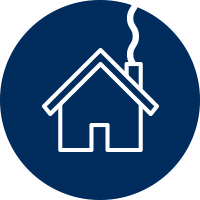Korea | Partial Revision of Food Code (No. 2019-71)
- Source: MFDS, Korea
- Aug 26, 2019
- 3 min read
The Ministry of Food and Drug Safety, Korea (MFDS) announced partial revisions for the "Specifications and Standards of Food" (hereafter referred to as the "Food Code") under notification no. 2019-71 on Aug 26, 2019.
Reasons for revision
New general standards for use has been established to clarify regulations, such as the food additives types used for the cultivation of microorganisms for consumption purposes. In addition, the relevant standards will be changed to reflect the integrated revision of food types in the Korean Food Code, and the list of food additives available for infants and babies and the source origin list of natural flavoring agents will be revised. The amendment intends to revise the specifications and standards of food additives to improve the bactericidal activity analytical method of disinfectants/sanitizers of ingredient standards and equipment for 6 items such as sodium L-glutamate.

Main Revisions
1) Establishment of general use standards for food additives used in the culture of microorganisms etc.
a) Necessity to clarify regulations such as types and use standards of food additives used in cultivation of microorganisms, etc.
b) Establishment of the general use standards regarding the scope and use standards of food additive that can be used for cultivation of microorganisms etc. (II. 2. 4)
c) Revitalization of the food industry and the understanding of civil applications by clarifying the regulations on food additives that can be used in culture of microorganisms etc.
2) Revision of ingredient standards of 6 items such as “Glutamic Acid”
a) Necessity to replace hazardous reagents with low toxicity reagents and conform to international standards of ingredient specifications.
b) Improvement of analytical methods of Pyrrolidone Carboxylic Acid among purity test of 3 items such as “L-glutamic acid” (II. 4. 가. L-glutamic acid, Monoammonium L-Glutamate, Monopotassium L-Glutamate).
c) Improvement of analytical methods such as conformance test, purity test, and quantification methods of 3 items such as “Annatto, Water-Soluble” (II. 4. 가. Annatto, Water-Soluble, vitamin B12, preservative preparation) .
d) Protection of experimenter's health and conformance with international standards through improvement of analytical methods.
3) Maintenance of source origin names of "Natural Flavoring" agents
a) Amendment of Korean names of natural flavoring agents source origins.
b) Amendment of names and scientific names for 59 species of natural flavoring agents (II. 4. 가. Natural flavoring agents)
c) Clarification of Information on natural flavoring agents.
4) Amendment of standards for use of 13 items including potassium hydroxide
a) Standardization with food type revisions and necessity to maintain standards for use of food additives that can be used for infants and young children.
b) Amendment of standards for use of 11 items including Copper Gluconate that reflects the integration of infant cereal formula and other infants and young childrend foods into infant and young children food (II. 5. 가. Copper gluconate, Manganese gluconate, Zinc gluconate, Ferrous gluconate, vitamin K1, 5'-Cytidylic acid, Disodium 5'-Cytidylate, 5'-Adenylic Acid, Disodium 5'-Uridylate, Copper sulfate, Zinc Sulfate)
c) Standardization of the standards for use of potassium hydroxide among the standards for use of food additives that are allowed for use in infants and young children food, and move Heme iron to the list of food additives used for nutrient fortification (II. 5. 다. (1), (2))
d) Improvement of understanding of civil applications by standardizing food types with the Korean Food Code and clarifying the standards for use of food additives.
5) Improvement of bactericidal activity analytical method
a) Amendment is required to improve the understanding of the bactericidal activity analytical method and the ease of execution.
b) Improvement of bactericidal activity analytical method in General Test Methods (IV. 37.).
d) Improvement of ease of test analysis.
6) Improvement of safety submission data regulations when designating new food additives
a) Necessity to clarify the scope of safety data that must be submitted when designating new food additives.
b) Establishment of new regulations on additional submission of safety data in the same way as existing food additives in the case of using food additives recognized as processing aids for other purposes. [Table 1].
c) Promoting National Health by Securing Food Additives.
Related articles (Korean):













Comments